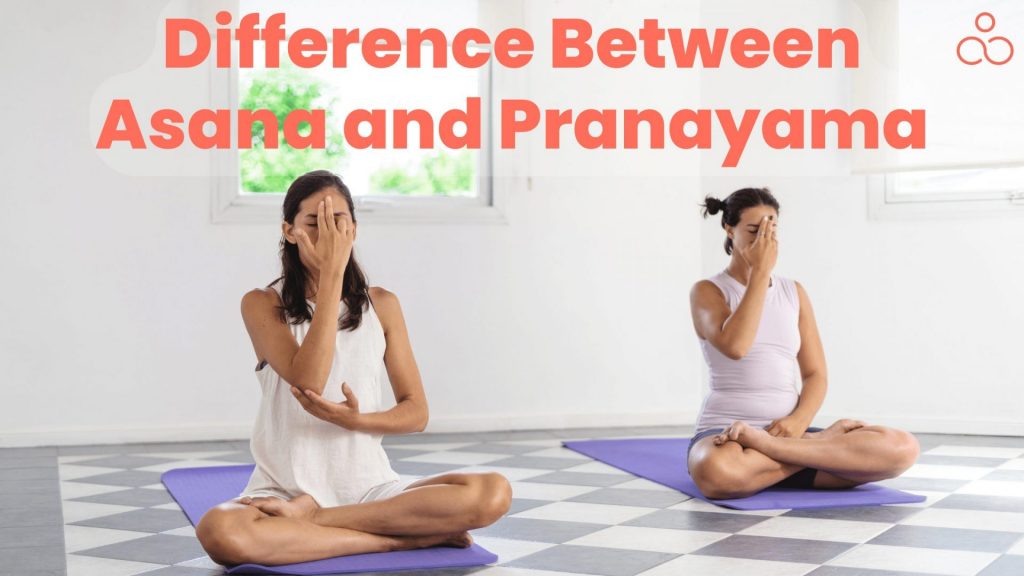Have you ever been curious about the secrets behind traditional Indian yogic practices? If so, then you’ve come to the right place! In this blog post, we’ll reveal the key differences between asana and pranayama, two essential components of yoga practice. By the end of this journey, you’ll have a deeper understanding of difference the between asana and pranayama. You will be able to choose which practice is best suited for you. So let’s dive in!
What is an asana?
Asanas are basically just different physical postures that you can use in yoga to improve strength, balance, and overall flexibility in your body. Trying out different postures can range from simple seated positions to more complicated inversions, all of which involve holding a pose for a certain amount of time while focusing on breathing exercises. Incorporating different asanas in your yoga practice is a core element, and it’s often combined with meditation and other types of spiritual practices to help bring mindfulness and inner peace into your life.
Who should do asanas?
The practice of asanas, which is an important part of yoga, can be beneficial for people of all ages and abilities. Also, if you want to learn about some yoga poses that can help you with tight hips related issues then look no further because it’s just one click away, advanced hip opening yoga poses. Asanas help to improve flexibility, balance, strength, and physical health, while also reducing stress and anxiety, and developing mindfulness and spiritual awareness. With modifications and guidance from a qualified teacher, asanas can be practiced by anyone, from beginners to experts, and can be easily incorporated into daily routines to improve overall well-being.
Purpose of asanas
Yoga poses, or asanas, are used for a variety of reasons. Let’s look at six of them:
- Meditation
Asanas are like friends- always there to help you calm your mind and enhance focus, especially when used in meditation practice.
- Better Sleep
If you’re struggling to get enough rest, try incorporating forward folds and similar poses into your routine. These poses can have a calming effect on the nervous system and help promote a more restful sleep.
- Spiritual growth
In some spiritual practices, people use asanas in order to achieve self-improvement or to form a deeper connection with the divine.
- Self-awareness
Practicing yoga asanas can have a positive impact on both your physical and mental wellbeing. As you move through different poses, you become more aware of your body and how it feels in each position. With time and practice, this increased body awareness can help you develop a deeper connection with yourself.
- Treatment
Asanas are like superheroes for the body. They possess the power to heal a plethora of physical as well as mental health conditions – including back pain, depression, and sleep disorders. So, the next time you’re looking for a natural remedy, give yoga asana a try!
- Physical health
Yoga is amazing for so many reasons, one of them being the ability to fill your life with love and to help you open your heart when you’re feeling low. If you’re new to hip-opening yoga, don’t worry if it takes time to get comfortable with the moves. Begin with heart-opening yoga poses, take it slow, and gradually build up your strength and stamina for the poses. Practicing yoga asanas on a regular basis can do wonders for your physical health. It helps improve strength, flexibility, and balance, making you a lot more capable in your daily activities.
Principles of practicing asana
- Remember to follow your breath
When practicing asanas in yoga, it’s important to follow your breath. You inhale while performing movements that open up the chest and abdominal muscles, and exhale for movements that require contraction. This rhythm ensures a mindful and effective practice.
- It’s okay to not hold it for too long
So, when you’re just starting to practice, you won’t hold the Asanas for too long. This is actually a good thing because it helps you recognize which movements match up with your inhalations and exhalations.
- Don’t worry about keeping you mind calm
This practice does a lot of good things for your body. It helps you relax, improves how your glands work, makes your lungs stronger, and reduces physical and mental stress. It also helps to calm your mind and clear your thoughts.
- Now, try to hold it longer
So, once you’ve gotten the hang of the basics, it’s time to hold the Asana for a bit longer while keeping your breathing calm and steady. As you do this, try to really focus on the specific part of your body that the Asana is meant to stretch or strengthen.
- Incorporate a pose for the balance
After doing a yoga pose, make sure to also focus on your breathing. It’s important to then do a counter pose or equalizing posture to balance out your body.
5 basic asanas to kickstart your yoga journey
- Downward-Facing Dog
Start by getting on all fours with your hands shoulder-width apart and your knees hip-width apart. Then, lift your hips and extend your arms and legs out, forming an inverted V-shape. Relax your neck and focus on your navel.
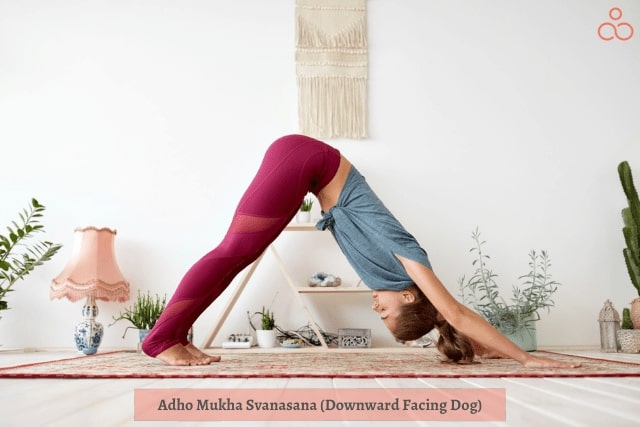
- Warrior II
Place your feet a good distance apart and rotate your right foot 90 degrees to the right, while your left foot turns 45 degrees to the right. Keep your palms facing down and your arms parallel to the ground. Come down into a lunge and look towards your right fingertips.
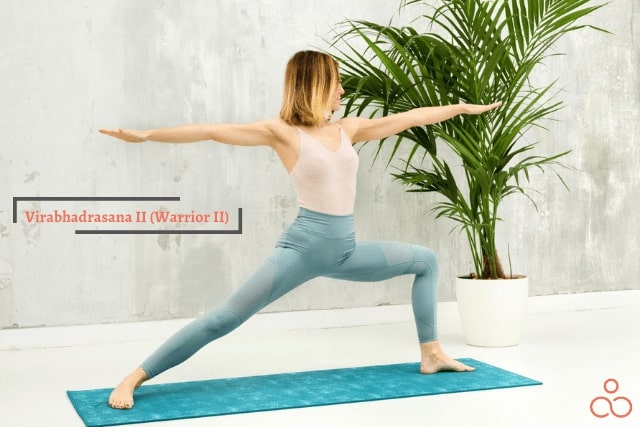
Stand up tall with your feet hip-distance apart, then shift your weight onto your left foot and put your right foot’s sole on your inner left thigh. Place your hands on your hips and keep your right knee pointing outwards. Once balanced, raise your arms above your head.
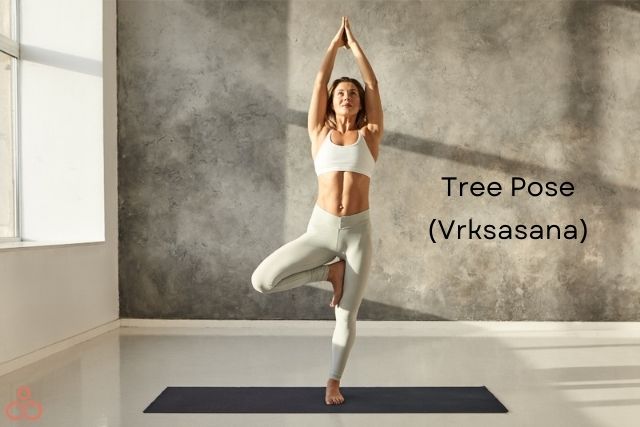
- Triangle Pose
Stand up straight with your feet around three feet apart. Turn your right foot 90 degrees clockwise, while leaving your left foot inwards. Reach out and grab your right ankle, shin, or a block with your right hand and stretch your left arm up to the sky. Look towards your left fingertips.
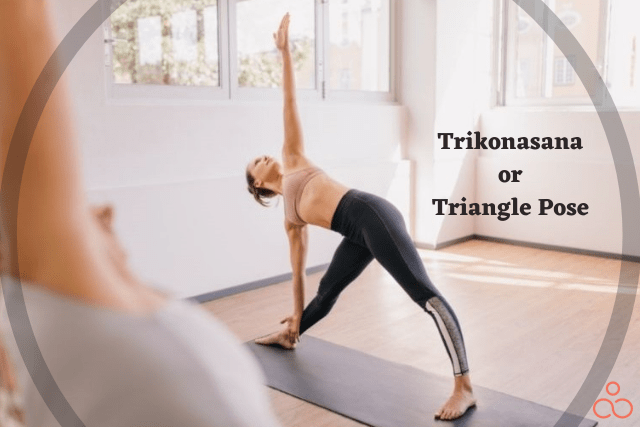
- Cat-Cow Stretch
Begin on your hands and knees with your wrists directly under your shoulders and knees beneath your hips. While inhaling, arch your back and tuck your chin towards your chest. As you exhale, round your back and lift your head up.
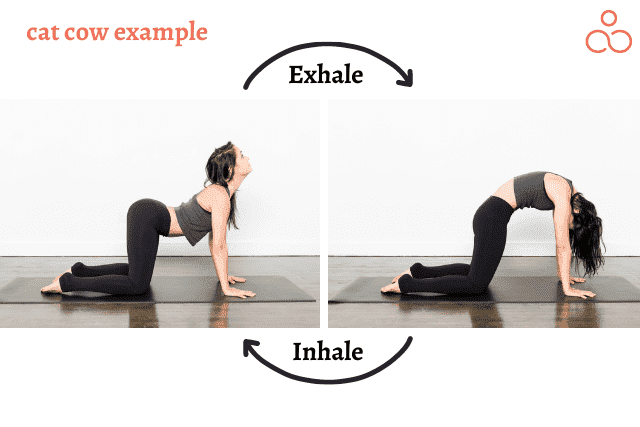
Asanas: The pillar that supports your yoga journey
Asana, or yoga postures, is a cornerstone of the yoga practice. Through these physical poses, we increase our strength, flexibility, and balance while preparing the mind for meditation. Asanas have been practiced since ancient times, with Patanjali’s Yoga Sutras containing references to them. From animals to plants, each asana mimics nature’s various objects. Every pose offers unique benefits and challenges, from beginner to advanced levels. Seated, supine, standing, and balancing poses are different kinds of asanas. Practitioners should focus their attention on alignment, mindfulness, and breathing during each pose. Asanas can stand alone or be part of a larger yoga sequence, and they can be practiced by anyone regardless of age or fitness level. With consistent practice, we gain physical and mental benefits, leading to overall health and wellbeing.
What is pranayama?
Pranayama can significantly reduce the risk of arrhythmia, which is an abnormal heart rhythm that may prevent the heart from pumping enough blood to the body. This reduction is due to the changes that pranayama brings about to the electrophysiological characteristics of heart activity in patients with arrhythmia. Pranayama is a yoga practice that focuses on controlling one’s breathing pattern as a way of promoting mental clarity and relaxation. This term is derived from two Sanskrit words – “prana,” meaning life force, and “yama,” meaning control. Pranayama techniques can involve deep diaphragmatic breathing, alternate nostril breathing, and rapid inhalations and exhalations. Studies have indicated that pranayama has positive health benefits such as reducing stress and anxiety, improving overall lung function, and promoting well-being. Additionally, yoga has been proven to help decrease body fat and pranayama is particularly effective in combating anxiety and depression.
Who should do pranayama?
Anyone can benefit from practicing pranayama, as it helps to increase oxygen supply to the body and promote relaxation. However, it is important to consult with a doctor or other healthcare professional before starting any new exercise regimen, including pranayama, especially if you have any underlying medical conditions or breathing difficulties. Pregnant women should also consult with their doctor before practicing pranayama.
Purpose of pranayama
Pranayama offers numerous physical, mental, and spiritual benefits. Here are 6 advantages that come with practicing pranayama:
- Stronger breathing
Pranayama helps strengthen the respiratory system, which leads to better overall health. It is an effective technique that involves controlling your breathing and inhaling and exhaling deeply. When practiced regularly, it has been shown to improve respiratory function and can even reduce the risk of respiratory illnesses.
- Lower levels of stress
Part of pranayama includes breathing exercises that can help alleviate feelings of stress and anxiety. These exercises have been found to be effective in reducing levels of stress, providing a useful tool for those seeking to manage their own stress levels in a healthy and natural way..
- Increased oxygen
Pranayama can increase the amount of oxygen your body receives, thereby providing an oxygen boost to your vital organs, including your brain.
- Boosted digestion
Pranayama can be effective in promoting healthy digestion and regular bowel movements by stimulating the digestive system.
- Improved focus
Pranayama can help improve your concentration and support your academic, professional, and personal goals. By practicing Pranayama regularly, one may find their mind becomes clearer and more focused, making it easier to stay on task and achieve their objectives.
- Spiritual development
Pranayama is a significant component of the spiritual practices of yoga, which encourages achieving inner peace and spiritual growth. It is a breathing technique that involves regulating the breath, which may help improve concentration and physical and mental wellness.
Principles of practicing pranayama
- Pranayama is about controlling breath
Pranayama is the practice of controlling breath in yoga which is incredibly beneficial both for the mind and body. It is important to follow certain principles to ensure that you are practicing pranayama safely and effectively.
- Start with something simple
If someone is new to pranayama, it is best to start with simple techniques like abdominal breathing before trying more complex ones. By doing so, they can build a strong foundation for their practice and avoid any unnecessary strain.
- Remember to be consistent
To reap the benefits of pranayama, it is important to practice consistently. When practicing pranayama, try to focus all of your attention on the breath which can help to quiet the mind and promote relaxation.
- Pay attention on how your body reacts
Pay attention to how your body responds to each technique and choose a quiet, clean space where you can practice without distractions. By following these principles, you can ensure that you are practicing pranayama safely and effectively, and over time, you may begin to notice improvements in your physical health, mental clarity, and overall well-being.
Pranayama- The pillar that supports your yoga journey
Pranayama refers to consciously controlling and regulating one’s breathing. During inhalation, we receive oxygen and a cosmic energy known as Prana, which is responsible for creating, preserving, and transforming the universe. Prana, which is present not only in the air we breathe but also in the food we consume, is pivotal to life and consciousness. As a result, maintaining a healthful vegetarian diet is critical. Guiding Prana throughout the body can lead to physical detoxification, heightened immunity, increased vitality, as well as inner serenity and rationality. According to legends, the number of breaths a person takes determines their lifespan. Yogis strive to reduce their breathing rates to prolong their lives and optimize their time.
5 basic pranayama to kickstart your yoga journey
Pranayama is a form of yogic breathing that helps to improve mental clarity and physical well-being. Here are five different types of Pranayama and instructions on how to perform them:
- Kapalbhati Pranayama
Kapalbhati has many benefits to perform sit with your legs crossed and your back straight. Take a deep breath in and then forcefully exhale through your nose, pulling your belly in towards your spine. Repeat for up to 10 minutes.
- Anulom Vilom Pranayama
Anulom Vilom has many health benefits to perform sit with your legs crossed and your back straight. Close your right nostril with your thumb and inhale deeply through your left nostril. Close your left nostril with your ring finger and exhale through your right nostril. Repeat, alternating nostrils, for up to 10 minutes.
- Bhastrika Pranayama
Bhastrika Pranayama is great for your psychological health benefits. To do this, sit with your legs crossed and your back straight. Take a deep breath in and then forcefully exhale through your nose, and then inhale deeply through your nose. Repeat this rapid, forceful breathing for up to 5 minutes.
- Ujjayi Pranayama
Ujjayi Pranayama is great for focus and concentration. To do this, sit with your legs crossed and your back straight. Take a deep breath in and then exhale through your nose, creating a sound similar to ocean waves with the back of your throat. Repeat for up to 5 minutes.
- Nadi Shodhana Pranayama:
Nadi Shodhana Pranayama helps with depression and many more. To perform this, sit with your legs crossed and your back straight. Close your right nostril with your thumb and inhale deeply through your left nostril. Close your left nostril with your ring finger and exhale through your right nostril. Inhale through your right nostril, close it with your thumb, and exhale through your left nostril. Repeat for up to 10 minutes.
Can Pranayama be Considered an Asana?
Pranayama, also known as yoga breathing exercises, can be practiced in various ways and body postures. While some people consider it as an asana or yoga pose because of specific body positioning and breath control, it is a personal preference. The use of prahmin, a type of breathing, enhances balance in the body and mind by improving blood flow and calming the mind. There are several types of pranayama that provide unique benefits, focusing on the flow of prana or life force energy, and enhancing other aspects of the mind. Practicing breathing exercises can improve overall health by aiding in circulation, reducing stress, and improving sleep quality, digestion, and concentration.
Exploring the interconnectedness of asanas and pranayama in yoga
Asanas and pranayama have a complementary relationship in yoga which is beneficial for physical, mental, and spiritual wellness. Asanas involve taking physical postures and pranayama is focused on controlling breath, both of which incorporate deep breathing during movements. This helps to calm the mind, reduce anxiety and boost mental clarity, focus and inner peace. Asanas work to enhance muscle strength, physical health and flexibility leading to better mental clarity, focus, and inner peace. The connection between asanas and pranayama in yoga is critical in achieving balance. Practicing both together leads to enhanced physical, mental and spiritual well-being through improved respiratory function and overall health from various breathing techniques. The relationship between asanas and pranayama is interdependent, as asanas open the body up, improving circulation to aid in breath control. Different asanas affect different areas of the body associated with breathing, like chest-opening asanas, improving lung function while forward bends stimulate the parasympathetic nervous system to relax and reduce stress. The holistic understanding of the mind-body connection in this ancient practice is the result of the interdependent relationship between asanas and pranayama.
The importance of asana and pranayama in yoga: A holistic approach to wellness
Asana and pranayama are vital aspects of practicing yoga. Asana refers to the physical postures and movements performed within yoga, while pranayama focuses on controlling one’s breath. These practices, when combined, help in promoting an individual’s physical, mental, and emotional wellness. Asana aids in enhancing one’s strength, flexibility, balance, and posture by stretching muscles and joints and increasing the flow of blood and oxygen, thus supporting healthy digestion and elimination. On the other hand, pranayama calms the mind, lowers anxiety levels, improves focus, concentration, and mental clarity by regulating the breath. Additionally, this practice aids in balancing the nervous system, enhancing the quality of sleep, and improving overall respiratory health. Ultimately, the integration of asana and pranayama within yoga provides a comprehensive approach to health and self-care for individuals to boost their physical, mental, and emotional well-being.
Combining asana and pranayama techniques for a more complete yoga practice
Asana and pranayama are two essential practices in yoga that complement each other perfectly. Asanas, the physical postures, prepare the body for pranayama, the breathing exercises that calm and focus the mind. By combining the two, you can achieve a deeper level of relaxation and concentration. Here are some tips on how to do asana and pranayama together:
- Start with some basic asanas, such as Mountain Pose or Child’s Pose, to warm up the body and focus the mind.
- Once you feel comfortable, move on to more advanced asanas that require more strength and flexibility, such as Triangle Pose or Half Camel Pose.
- While holding the asanas, focus on your breathing. Inhale deeply through the nose and exhale slowly through the mouth. Visualize the breath moving throughout your body, and feel the tension melting away.
- When you are ready, move on to pranayama exercises. For example, try the Alternate Nostril Breathing technique, where you inhale through one nostril, hold the breath, and exhale through the other nostril.
- As you practice pranayama, keep the same focus on your breath and visualize it filling your entire body with calm and energy.
- End your session with a few minutes of relaxation, either in Savasana (Corpse Pose) or seated with your eyes closed. Focus on your breath and let go of any remaining tension or stress. Remember, asana and pranayama are practices that require patience, persistence, and dedication. By combining the two, you can achieve a more profound experience and improve your overall physical and mental health.
Difference between asana and pranayama
| Parameters | Asana | Pranayama |
| Focus | Asana primarily involves physical postures and movements. | Pranayama focuses on breath control and regulation. |
| Form | Asana is used more commonly as a form of exercise. | Pranayama is used more commonly as a form of meditation and stress relief. |
| Time | Asana can be practiced at any time of the day. | Pranayama is recommended to be practiced during early morning hours or on an empty stomach. |
| Approach | Asana can be performed alone or in a group. | Pranayama is typically practiced alone to avoid distractions. |
| Improves | Asana is believed to improve physical strength and flexibility. | Pranayama is believed to improve mental clarity and relaxation. |
| Practice | Asana is often used as a warm-up or cool-down prior to other physical activities. | Pranayama can be practiced on its own or as a part of a larger yoga practice. |
| Modification | Asana can be modified for different levels of physical ability. | Pranayama can be modified for different levels of experience and breath capacity. |
| Integration | Asana is more easily integrated into modern exercise routines. | Pranayama may require a greater commitment and understanding of traditional yoga practices. |
| Style | Asana practices may vary widely depending on the style of yoga being practiced. | Pranayama practices are generally consistent across different traditions. |
Uniting asana, pranayama, and meditation: A yogi’s eternal practice
Asana can heighten your bodily awareness, facilitate the release of tension and blockages, and allow you to tune in to the subtler movements of internal energies. Moving towards Pranayama, you can learn techniques to liberate both breath and energy, still the mind and stimulate the nervous system. Through various practices, you can influence your body through your breathing. Bone structure differs between individuals, meaning that there is no perfect alignment or one-size-fits-all approach to poses. It is crucial to discover what works best for you and be open to experimenting with different methods in your meditation journey.
FAQs
What is better to start with, asanas or pranayama?
Asanas help to prepare the body for extended periods of time and improve meditation skills. They benefit the muscles, joints, cardiovascular and nervous systems, lymph system, and mind, in addition to aiding the mind, soul, and chakras. Psychosomatic exercises balance the entire nervous system and stabilize the practitioner’s state of mind. Pranayama, a breathing exercise that improves oxygen and nutrient levels in the body, is called phasalaya. It improves strength, balance, and flexibility, with slow and deep breaths increasing blood flow and muscle contraction. The body benefits from the pose because it strengthens the muscles and promotes strength. The lung’s functions are improved by Pranayama, which improves oxygen flow and reduces stress while improving capacity.
How many asanas are there in pranayama?
The number of asanas in pranayama has been stated as 84 in the traditional texts. However, there may be variations in the selections and names of the asanas, as different texts describe them differently, leaving room for interpretation.
What is the optimal asana for practicing pranayama?
Both Padmasana and Shirshasana, also known as the Lotus position and Headstand, respectively, are considered regal asanas. Upon achieving the Lotus pose, our chakras are harmonized and stimulated, and our thoughts begin to subside. This particular stance is highly beneficial for pranayama and meditation, as it offers a cozy and stable seated posture.
What is the effect of Asanas and Pranayama on Weight loss?
Practicing yoga, particularly asanas and pranayama, can aid in weight loss. Asanas, or yoga postures, improve flexibility, balance, and strength, and burning calories leads to weight loss. Pranayama is a set of breathing techniques that helps to reduce stress, which indirectly aids in weight loss. Deep breathing during pranayama helps in oxygenating the body, which can also aid in burning calories. However, keep in mind that weight loss is a holistic process that requires a balanced diet, regular exercise, and a healthy lifestyle.
Which is a better option: asana or pranayama?
Asana and pranayama are two key components in the world of yoga, each offering its own advantages. Asana concentrates on physical postures to benefit strength, flexibility, and balance, while pranayama focuses on regulating the breath to boost energetic flow. Both practices contribute to overall health and wellness. Asana helps to tone the body, improve posture, and reduce stress and anxiety, whereas pranayama works to enhance vitality, soothe the mind, and foster concentration. Whether to pursue asana or pranayama is determined by one’s personal goals. For a comprehensive yoga practice, it’s recommended to combine both asana and pranayama into your routine.
Conclusion
Both asana and pranayama are essential practices in the world of yoga, and they contribute to the physical, mental, and spiritual well-being of an individual. While asanas focus on the physical postures and movements that promote strength and flexibility, pranayama involves regulating the breath to improve one’s energy, concentration, and inner peace. Thus, asana and pranayama are complementary practices that work together to offer holistic benefits to an individual practicing yoga.

